A lot of arenas that I've worked in have great traditions of improvising tools and parts. Back when I was an undergraduate research assistant, we closed off large ventillation pipes with large pie plates and duct tape--not in a teach lab experiment, but in a real, live research experiment. And programming is often an excersize in making do with not quite what you want.
However, sometimes there are situations where only just the right tool will do. Once such came up recently. I bought a gear puller for the gears on a VW crankshaft. The crank is assembled to go into the engine by installing the #3 main bearing, and then pressing two gears and spacers onto the shaft. . Before having it machined, the gears and other parts need to be pulled back off, requiring quite a bit of force, because the camshaft drive gear is a press fit on the crank.
Here's the fully assembled crankshaft with the gear puller beside it:
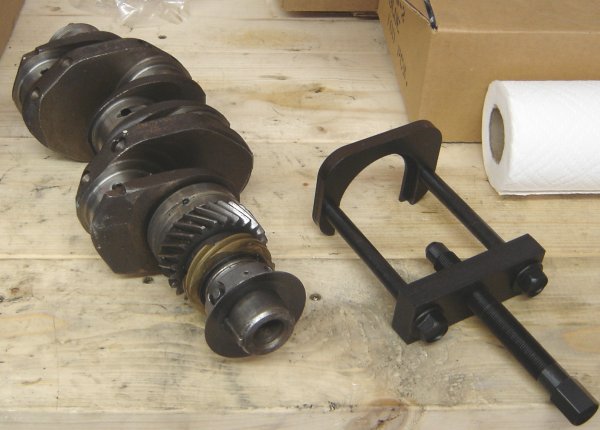
Detail of the end of the crank. The snout at the end is where the crankshaft pulley goes. The disk inside of that is the oil slinger, being held on by the small woodruff key. The grey ring behind that is the #4 main bearing. Then a spacer, the brass colored distributor drive gear, a wider spacer, the distributor drive gear, and then the #3 main bearing.
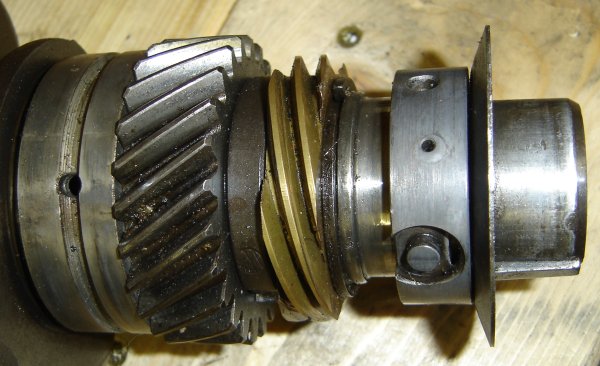
The other tool besides the gear puller that was indispensible; a circlip pliers. When you squeeze the handles, the tips get farther apart. Here it's removing the retaining ring outside of the distributor gear.
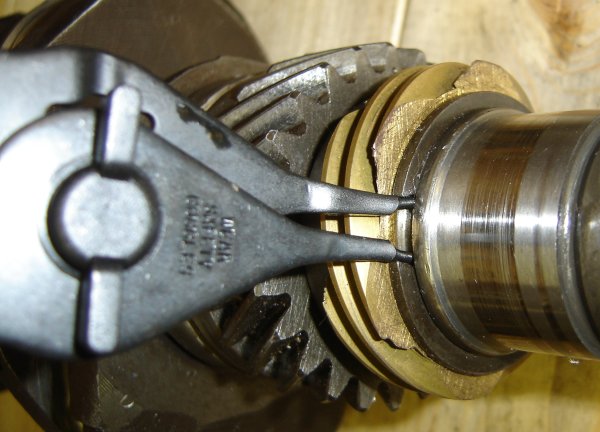
The puller in action. It required quite a bit of force to get it off, here I have the 17mm allen wrench for the transmission plugs to provide a lever to keep the puller from turning over.
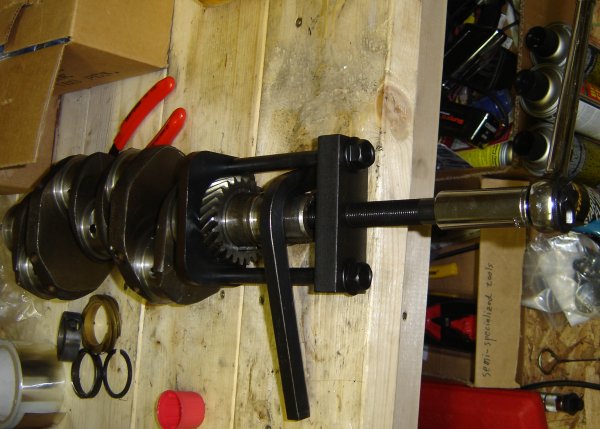
Parts as they came off the crank, in order from bottom center clockwise. The pile of metal shavings are either from the end of the screw on the puller or from the inside of the crank itself; Next time, I'll have to try to see if I can find something to put in there as a bushing.
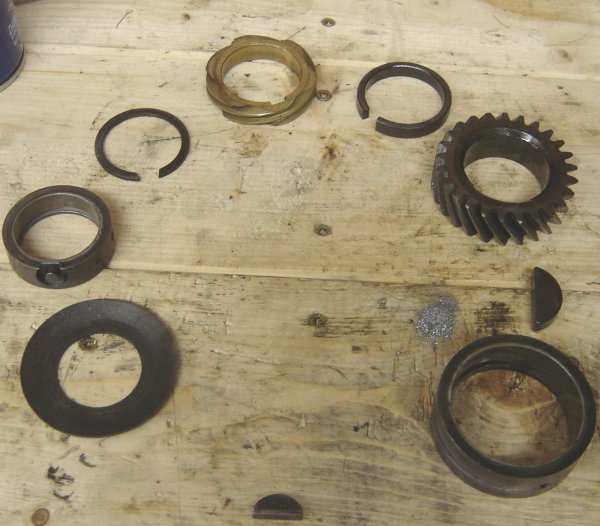
Oh, and happy independence day!